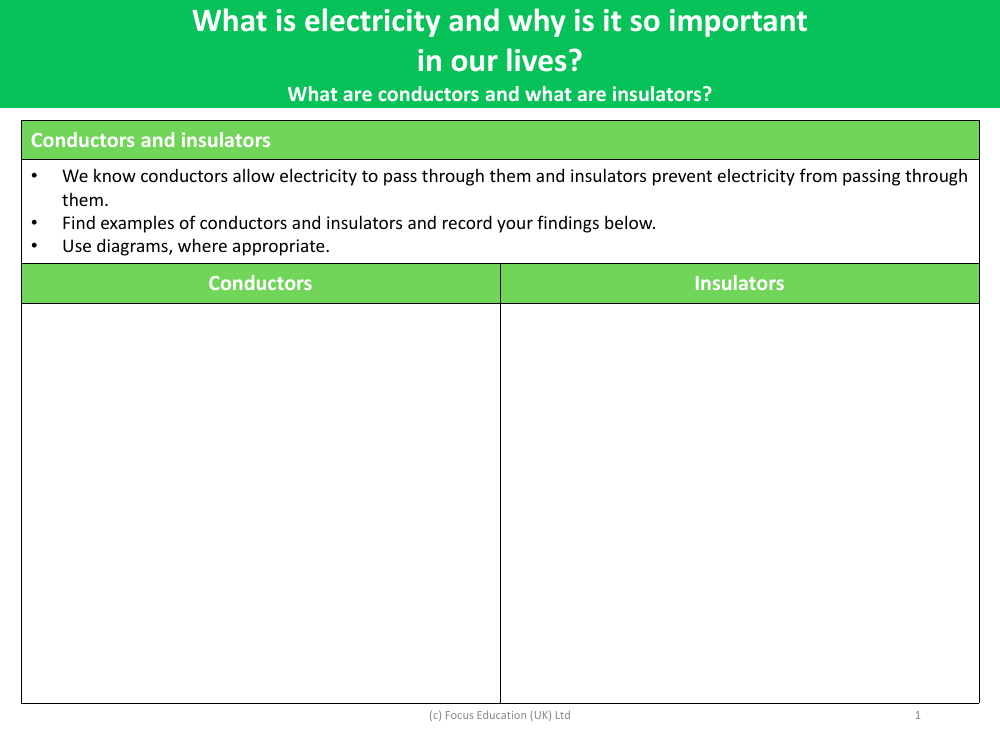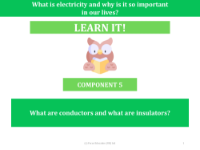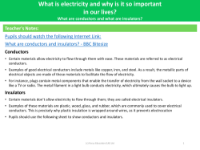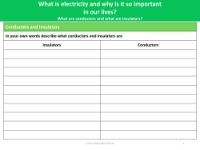Find examples of conductors and insulators - Worksheet

Science Resource Description
Electricity is a fundamental form of energy observable in positive and negative forms that occurs naturally (as in lightning) or is produced (as in a generator) and that is expressed in terms of the movement and interaction of electrons. It powers a vast array of devices and systems that are essential to modern life, from lighting and heating to computers and phones. Its importance cannot be overstated, as it is integral to the functioning of virtually all technological and electrical devices that we rely on daily.
When it comes to understanding how electricity travels, we distinguish between conductors and insulators. Conductors are materials that allow electricity to flow through them with ease. These materials, often metals such as copper, aluminium, and gold, have free electrons that can move around easily, making them ideal for use in electrical wiring and components. On the other hand, insulators are materials that do not allow electricity to pass through them readily. Common insulators include rubber, glass, plastic, and wood. These materials have tightly bound electrons that do not move freely, thus preventing the flow of electric current and offering protection against electrical shock. Identifying examples of these materials and understanding their properties is crucial for safely managing and utilising electricity in various applications.



